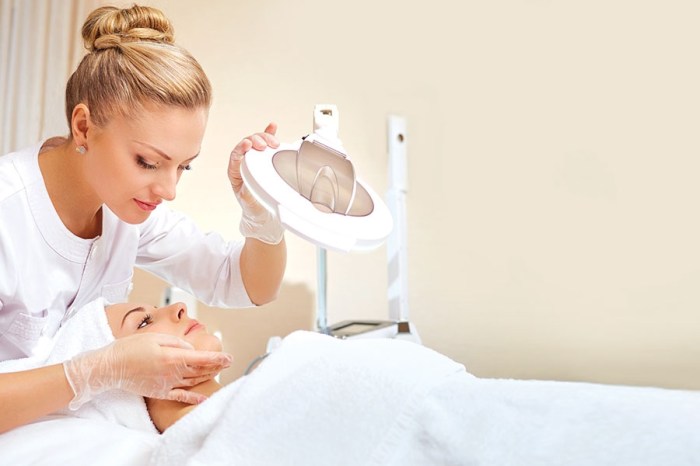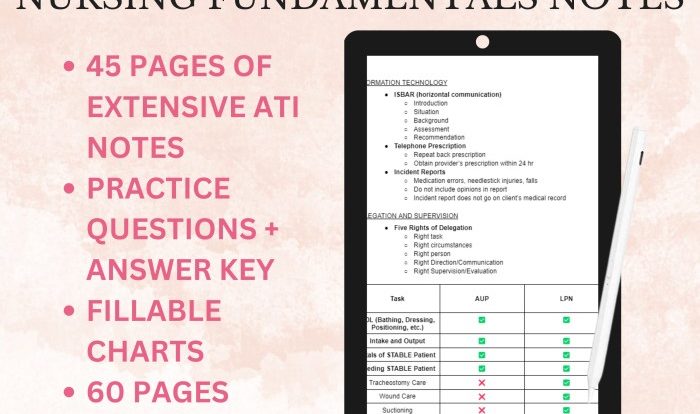In the realm of healthcare, the Ohio LPN scope of practice serves as a guiding framework, outlining the parameters within which Licensed Practical Nurses (LPNs) provide essential patient care. This in-depth guide delves into the legal framework, authorized tasks, educational requirements, employment opportunities, and regulatory oversight that shape the LPN profession in Ohio.
As we embark on this exploration, we will unravel the intricacies of LPN practice, highlighting the distinctions between LPNs and Registered Nurses (RNs), examining the educational pathway to becoming a licensed LPN, and uncovering the diverse healthcare settings where LPNs make invaluable contributions.
Scope of Practice for Licensed Practical Nurses (LPNs) in Ohio
The scope of practice for Licensed Practical Nurses (LPNs) in Ohio is defined by the Ohio Board of Nursing (OBN). The OBN is responsible for regulating the practice of nursing in the state of Ohio and ensuring that LPNs provide safe and competent care to patients.
The legal framework governing LPN scope of practice in Ohio includes the Ohio Revised Code (ORC) and the Ohio Administrative Code (OAC). The ORC defines the general scope of practice for LPNs, while the OAC provides more specific details about the tasks and procedures that LPNs are authorized to perform.
In Ohio, LPNs have a defined scope of practice that outlines their roles and responsibilities. While they cannot perform all tasks that RNs can, they play a vital role in providing patient care. Just like nancy va a esas flores , LPNs are essential members of the healthcare team, providing support and assistance to RNs and physicians.
Understanding their scope of practice is crucial for ensuring safe and effective patient care.
Tasks and Procedures Authorized for LPNs in Ohio
LPNs in Ohio are authorized to perform a wide range of tasks and procedures, including:
- Taking vital signs
- Administering medications
- Performing wound care
- Inserting and maintaining IVs
- Monitoring patients
- Assisting with medical procedures
- Providing patient education
LPNs may also perform other tasks and procedures as delegated by a registered nurse (RN) or physician.
Differences in Scope of Practice from Registered Nurses (RNs): Ohio Lpn Scope Of Practice

In Ohio, LPNs and RNs have distinct roles and responsibilities within the healthcare system. While they share some overlapping tasks, there are key differences in their scope of practice.
Level of Supervision, Ohio lpn scope of practice
One of the primary distinctions between LPNs and RNs is the level of supervision required. LPNs must work under the supervision of a licensed physician or registered nurse. This means that they cannot perform certain tasks independently, such as:
- Assessing patients
- Developing care plans
- Administering medications via IV
- Performing complex procedures
Education and Training Requirements for LPNs in Ohio

Aspiring LPNs in Ohio must fulfill specific educational and training criteria to obtain their license. These requirements encompass both initial training and ongoing continuing education.
Initial Education and Training
- Complete an approved LPN program at an accredited institution.
- The program typically spans 12 to 18 months and covers nursing fundamentals, clinical skills, and pharmacology.
- Upon program completion, students must pass the National Council Licensure Examination for Practical Nurses (NCLEX-PN) to earn their LPN license.
Continuing Education Requirements
To maintain their license, LPNs in Ohio must complete 20 hours of continuing education every two years. These courses should focus on updating knowledge and skills in nursing practice.
Employment Opportunities for LPNs in Ohio

The job market for Licensed Practical Nurses (LPNs) in Ohio is expected to remain strong in the coming years. As the population ages and the demand for healthcare services increases, the need for qualified LPNs will continue to grow.
LPNs are employed in a variety of healthcare settings, including hospitals, nursing homes, clinics, and home health agencies. They provide a wide range of patient care services, such as:
- Taking vital signs
- Administering medications
- Assisting with wound care
- Providing emotional support to patients and their families
Regulatory Bodies and Professional Organizations

LPNs in Ohio are regulated by the Ohio Board of Nursing (OBN). The OBN is responsible for licensing, monitoring, and disciplining LPNs in the state. The board also establishes and enforces standards of practice for LPNs.
Professional Organizations
In addition to the OBN, several professional organizations provide support and resources to LPNs in Ohio. These organizations include the Ohio Licensed Practical Nurses Association (OLPNA) and the National Association of Licensed Practical Nurses (NALPN).
These organizations offer a variety of benefits to members, including:
- Continuing education opportunities
- Networking opportunities
- Advocacy for LPNs
Essential Questionnaire
What are the key differences in scope of practice between LPNs and RNs in Ohio?
LPNs are authorized to perform a range of tasks under the supervision of a physician or advanced practice nurse, while RNs have a broader scope of practice and can work independently in certain situations.
What are the educational requirements to become a licensed LPN in Ohio?
LPNs must complete an approved practical nursing program and pass the NCLEX-PN exam.
What are the employment opportunities for LPNs in Ohio?
LPNs are employed in a variety of healthcare settings, including hospitals, nursing homes, clinics, and home health agencies.
